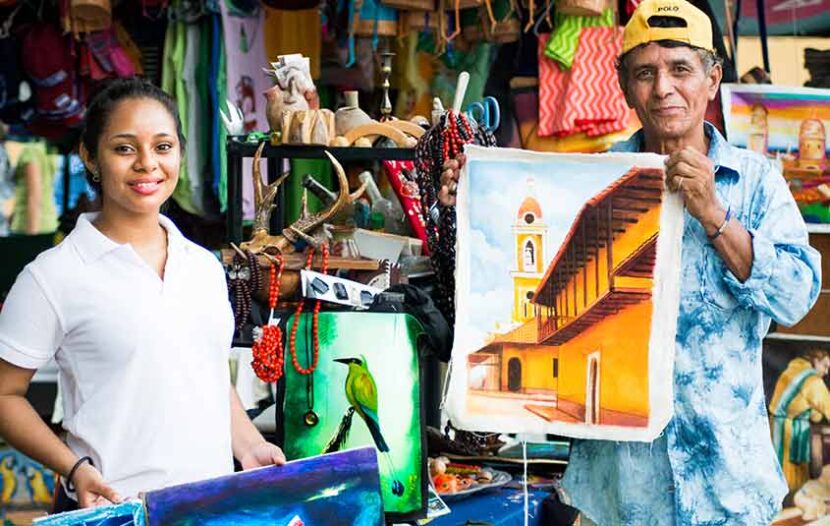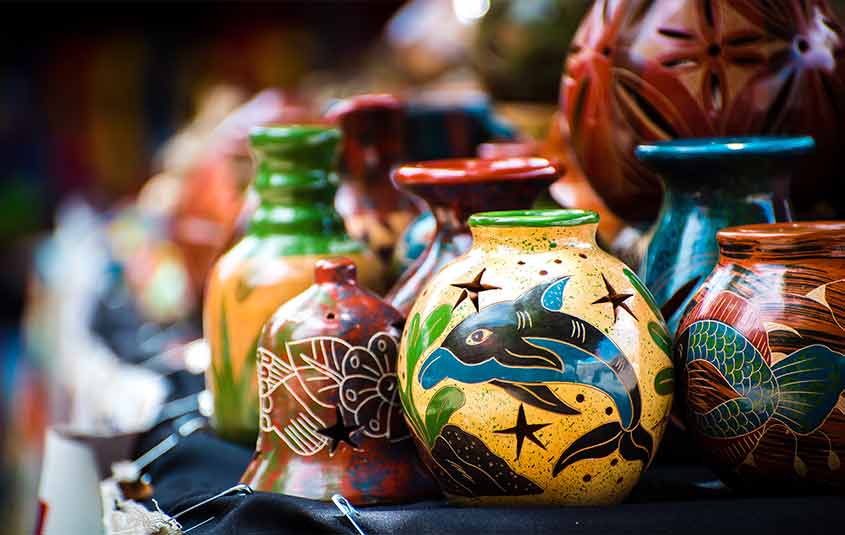NICARAGUA — Nicaraguan handicrafts are a testament to the country’s rich cultural heritage and artistic creativity. Skilled artisans craft a diverse range of handcrafted items, reflecting the traditions, stories, and natural beauty of Nicaragua. These handicrafts are not just objects; they are expressions of the soul of the nation, passed down through generations and preserved with pride.
One of the most iconic handicrafts in Nicaragua is the pottery of San Juan de Oriente. Renowned for its intricate designs and vibrant colors, this pottery style has been practiced for centuries by the indigenous communities. Artisans mold the clay with traditional techniques, creating exquisite vases, bowls, and figurines that narrate the tales of their ancestors.
For a more unique ceramic experience, consider venturing to Somoto and Jinotega. In Somoto, artisans are known for crafting exquisite white clay ceramics, while in Jinotega, their focus is on creating elegant black ceramics. Both styles have earned renowned acclaim across Nicaragua, making them enticing options for a memorable and cherished purchase.
Nicaraguan handicrafts are a testament to the country’s rich cultural heritage and artistic creativity. Skilled artisans craft a diverse range of handcrafted items, reflecting the traditions, stories, and natural beauty of Nicaragua. These handicrafts are not just objects; they are expressions of the soul of the nation, passed down through generations and preserved with pride.
One of the most iconic handicrafts in Nicaragua is the pottery of San Juan de Oriente. Renowned for its intricate designs and vibrant colors, this pottery style has been practiced for centuries by the indigenous communities. Artisans mold the clay with traditional techniques, creating exquisite vases, bowls, and figurines that narrate the tales of their ancestors.
For a more unique ceramic experience, consider venturing to Somoto and Jinotega. In Somoto, artisans are known for crafting exquisite white clay ceramics, while in Jinotega, their focus is on creating elegant black ceramics. Both styles have earned renowned acclaim across Nicaragua, making them enticing options for a memorable and cherished purchase.
Colorful textiles also hold a special place in Nicaraguan handicrafts. In Masaya, the town of El Coyotepe is celebrated for its handwoven hammocks, rugs, and clothing. The use of vibrant threads and elaborate patterns showcases the artisan’s attention to detail and dedication to their craft.
Visitors to the country can check out the art gallery district of Managua. Many of the pieces found reflect on the country’s political past. Each canvas immortalizes a small yet profound glimpse of Nicaraguan life, offering a unique window into the culture and emotions that shape the nation’s artistic expression.
Another place of interest to check out is Mina La India, where local artisans practice age-old gold mining techniques in the hillsides. Tourists can witness their skilled craftsmanship as they transform the precious metal into enchanting works of art. Visitors can admire and even purchase some of these delightful creations, are many pieces are available for purchase.
The art of weaving is an essential part of Nicaraguan handicrafts, and the Somoto Canyon region is known for its handwoven baskets and hats. Made from locally sourced materials, these artisanal creations exhibit both functionality and beauty.
Another noteworthy craft is the intricately carved wooden masks from the town of Masatepe. These masks play a significant role in traditional festivals and ceremonies, where they are worn by dancers to depict characters and stories from Nicaraguan folklore.
Nicaragua’s handicrafts extend beyond traditional items, as many artisans have adapted their skills to create contemporary pieces that blend modern aesthetics with traditional techniques. This fusion of old and new gives rise to innovative designs and unique expressions of Nicaraguan culture.
When visitors acquire Nicaraguan handicrafts, they not only take home beautiful mementos but also support the livelihoods of local artisans and the preservation of the country’s cultural legacy. With each handcrafted piece, Nicaraguan artisans continue to weave the tapestry of their nation’s heritage, inviting the world to appreciate their boundless creativity.
For more information about travel to Nicaragua go to www.visitnicaragua.us.


